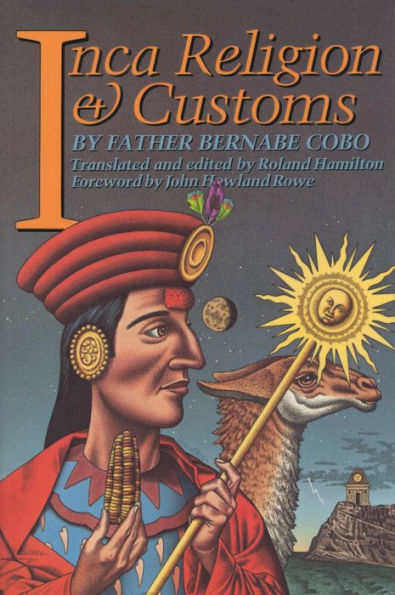Completed in 1653, Father Bernabe Cobo's Historia del Nuevo Mundo is an important source of information on pre-conquest and colonial Spanish America. Though parts of the work are now lost, the remaining sections which have been translated offer valuable insights into Inca culture and Peruvian history. Inca Religion and Customs is the second translation by Roland Hamilton from Cobo's massive work. Beginning where History of the Inca Empire left off, it provides a vast amount of data on the religion and lifeways of the Incas and their subject peoples. Despite his obvious Christian bias as a Jesuit priest, Cobo objectively and thoroughly describes many of the religious practices of the Incas. He catalogs their origin myths, beliefs about the afterlife, shrines and objects of worship, sacrifices, sins, festivals, and the roles of priests, sorcerers, and doctors. The section on Inca customs is equally inclusive. Cobo covers such topics as language, food and shelter, marriage and childrearing, agriculture, warfare, medicine, practical crafts, games, and burial rituals. Because the Incas apparently had no written language, such postconquest documents are an important source of information about Inca life and culture. Cobo's work, written by one who wanted to preserve something of the indigenous culture that his fellow Spaniards were fast destroying, is one of the most accurate and highly respected.
1100517430
Inca Religion and Customs
Completed in 1653, Father Bernabe Cobo's Historia del Nuevo Mundo is an important source of information on pre-conquest and colonial Spanish America. Though parts of the work are now lost, the remaining sections which have been translated offer valuable insights into Inca culture and Peruvian history. Inca Religion and Customs is the second translation by Roland Hamilton from Cobo's massive work. Beginning where History of the Inca Empire left off, it provides a vast amount of data on the religion and lifeways of the Incas and their subject peoples. Despite his obvious Christian bias as a Jesuit priest, Cobo objectively and thoroughly describes many of the religious practices of the Incas. He catalogs their origin myths, beliefs about the afterlife, shrines and objects of worship, sacrifices, sins, festivals, and the roles of priests, sorcerers, and doctors. The section on Inca customs is equally inclusive. Cobo covers such topics as language, food and shelter, marriage and childrearing, agriculture, warfare, medicine, practical crafts, games, and burial rituals. Because the Incas apparently had no written language, such postconquest documents are an important source of information about Inca life and culture. Cobo's work, written by one who wanted to preserve something of the indigenous culture that his fellow Spaniards were fast destroying, is one of the most accurate and highly respected.
27.95
In Stock
5
1

Inca Religion and Customs
279
Inca Religion and Customs
279Related collections and offers
27.95
In Stock

Product Details
| ISBN-13: | 9780292789791 |
|---|---|
| Publisher: | University of Texas Press |
| Publication date: | 06/28/2010 |
| Sold by: | Barnes & Noble |
| Format: | eBook |
| Pages: | 279 |
| File size: | 3 MB |
About the Author
From the B&N Reads Blog
